On a crisp, sunny November morning, Matt and I set out in our waders, food-filled bags on our back, to follow the River Gannel along a six kilometre stretch, on the look for salmonid habitat and potential areas for river improvement works. While we try to stay on the banks (because you’re faster, but also to try and disturb the habitat as little as possible), often we have to get into the river, up to our hips in water, wading through pools full of autumnal leaves dancing in the sunlight.
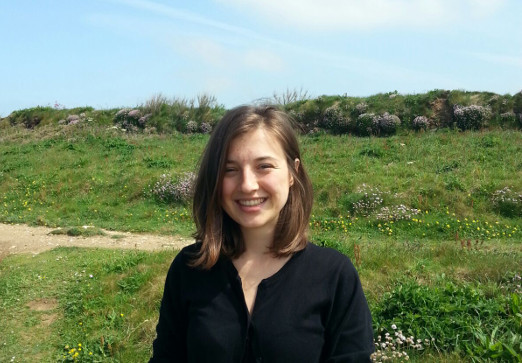
Kathi Bauer
Data, Evidence & Communications officer
It’s great – ducking under low-hanging branches, squeezing through fences, battling brambles, scrambling over surprisingly big boulders, trying to avoid the muddy bits that suck your foot in and fill your boots with muddy water… it sometimes feels more like an adventure in some unknown tropical jungle than a walk in Cornwall, fifty metres from a field full of cow poo. It takes us forever to get the first kilometre done – we get confused about where we are, the only reference marks field boundaries that we can’t often see because the vegetation on the banks is so dense and we’re in a woodland; other times, the shape of the river that we are walking through with its meanders and ponds is nothing like what we see on the map. At some point, Matt disappears, and I stay in the river, looking for fish until he pops up in the brambles making a lot of noise, wielding his measuring stick like a machete.
We break for tea and flapjacks on a bank in the river and realise that we probably won’t make it in one day, but we quickly press on. The land use around us changes and the shape of the river goes with it: where the surroundings are fields and meadows, the river tends to be shallow, wide and straight. In woodlands, however, we find much more variation, meanders, trees in the river with scouring pools underneath them that make great resting places.
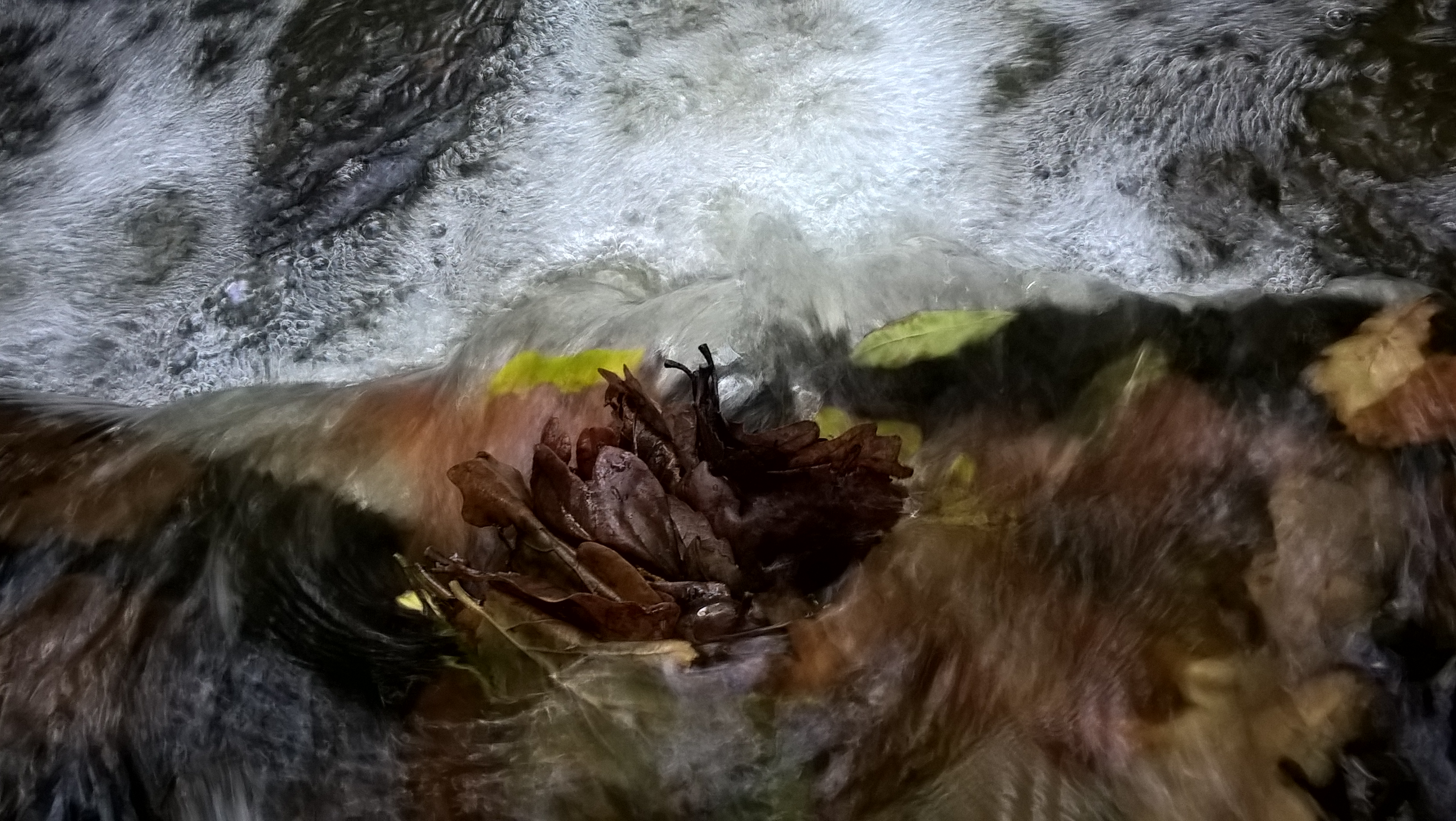
While walking through the river is exhausting, it makes it easier to see more closely how the in-river habitat looks: what fish population could it be suitable for, is there anything we can do to improve it? Often, we find that the flow seems low – it hasn’t rained in a while – and that, with a bit more flow, a lot could be done. The lack of variation in the wide, straight stretches means that there are no places to rest or hide for fish, no variation in velocity of the water and sediment that would be needed to give different ages a place to “hang out”.
Fry, for example, like relatively fast flowing, but rather shallow, riffle-y bits, while par prefer more flow. It needs a good mix of shaded and sunny areas to provide enough food for the fish while also offering protection and cool water, and pools where they can rest from the more exhausting passages through rapidly flowing water.
Making our way through woodlands, we find a lot of stretches that are quite overgrown. Low hanging branches, dense tree cover on the banks and brambles prevent the sun from warming the air, and Matt points out a few trees that he thinks could be taken out to improve the habitat. While for us the shade just meant cooler temperatures, for fish it might mean less food availability and variation. We find the first bridge and check whether it’s passable for fish: Matt approves. We cross the road and scramble back down to the river and, ducking under a few holly trees, we step into a completely unexpected bit: a pool opens before us, trees hanging into the water, weirdly white mushrooms on their trunks lit up by the reflection of the waves below. I am awestruck, and only get moving when I hear Matt splashing about in the distance.
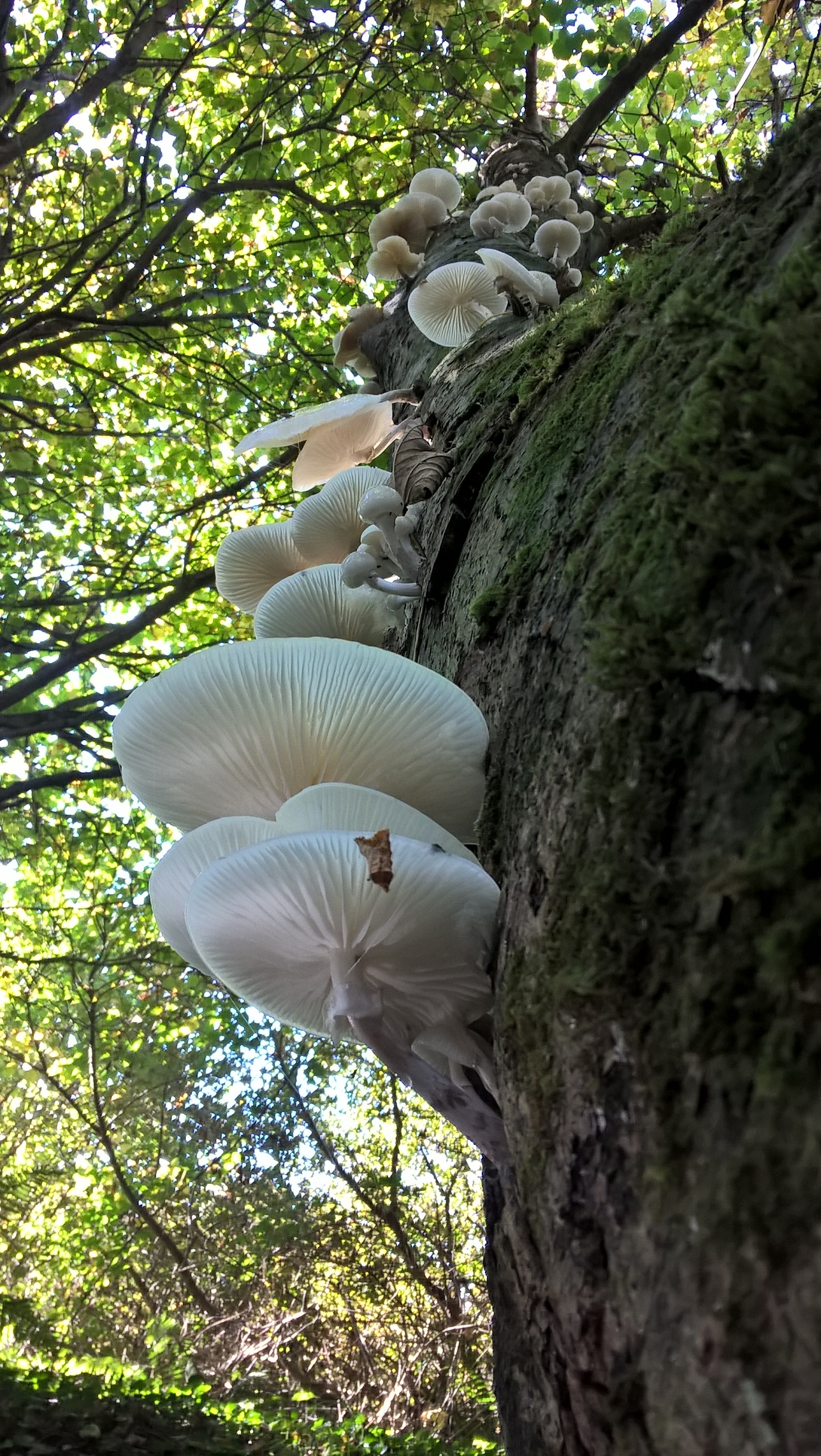
As we walk on, we notice that the water has become more turbid. Matt also kicks up the floor a bit, showing me how much silt washes out – another thing that would benefit from some work. The fine sediment clogs up the gravel, making it harder for juvenile fish to breathe and potentially rendering otherwise great habitat unsuitable for spawning.
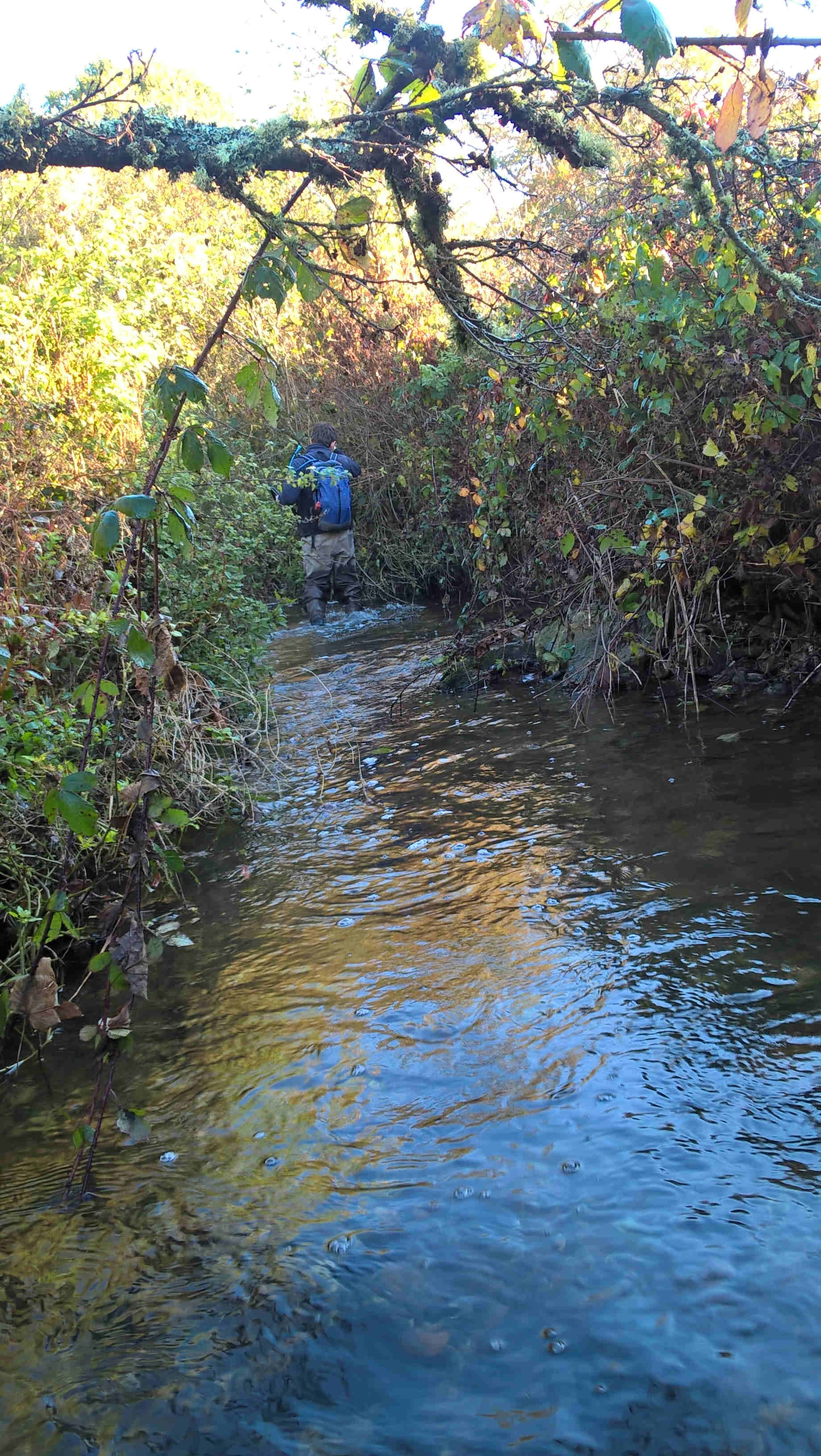
A few metres upstream, we find a potential source for some of the sediment: a gate between to fields full of cows, right next to the river. We can see where the cows have eroded some of the river bank, muddy water from the field seeping in, carrying sediment along with … other stuff. The cows seem a bit spooked by our appearance. It feels like that game you play as a kid: while you’re looking, no one can move, and as soon as you turn around everyone tries to get as close as they can to you. You can see the water getting much clearer once we’re past them. We come back into some woodland and get spooked ourselves: a pheasant flies up, followed by a heron a few minutes later. The river now winds its way around dead trees, boulders and sandbanks and more than once Matt and I just stop to look at it for a while. A few times we see some black shapes darting back and forth in the pools below – a good sign!
We get to the second bridge and climb over some barbed wire into a field (Matt has spoken to all the land owners before so they knew we were here and gave us permission to access their land), but we can see that it’s getting darker and we are only halfway through. As the sun sets behind some willow trees we contemplate what to do. When we get to the next road, we turn back – it’s getting dark, and we don’t know what lies ahead of us. Guided by a semi-accurate GPS on a dying phone, we navigate our way back over a farm track, through a farm where we are welcomed by four very loud, very excited (too loud, too excited) dogs. A car comes towards us, and we hope that it will stop so we can ask for directions – but the young driver just slows down and gives us a sceptical wave. The phone finally dies, but we know where we are now and find the car quickly – and I’m not all that sad that we’ll have to return tomorrow to walk the last few kilometres…
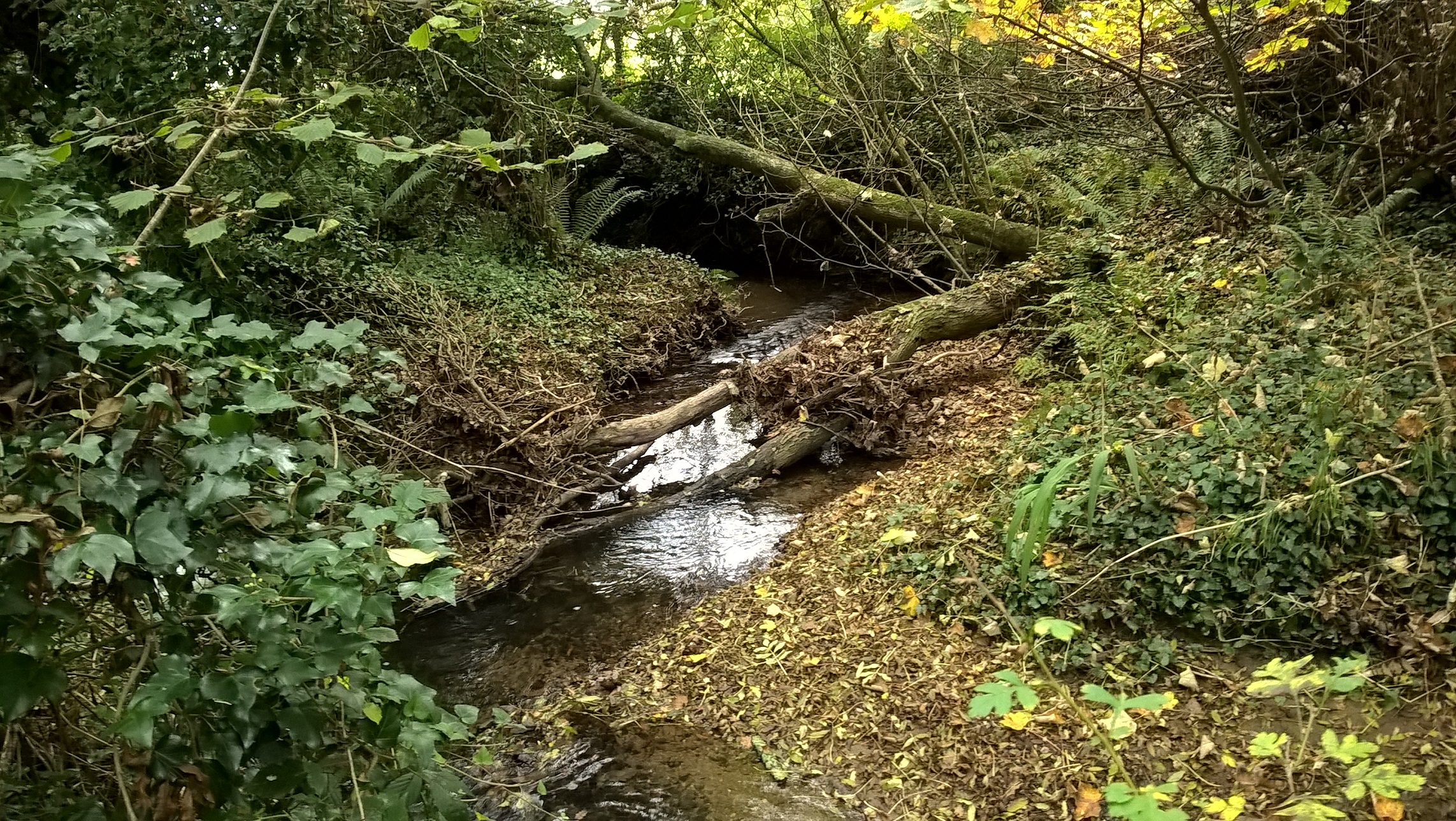

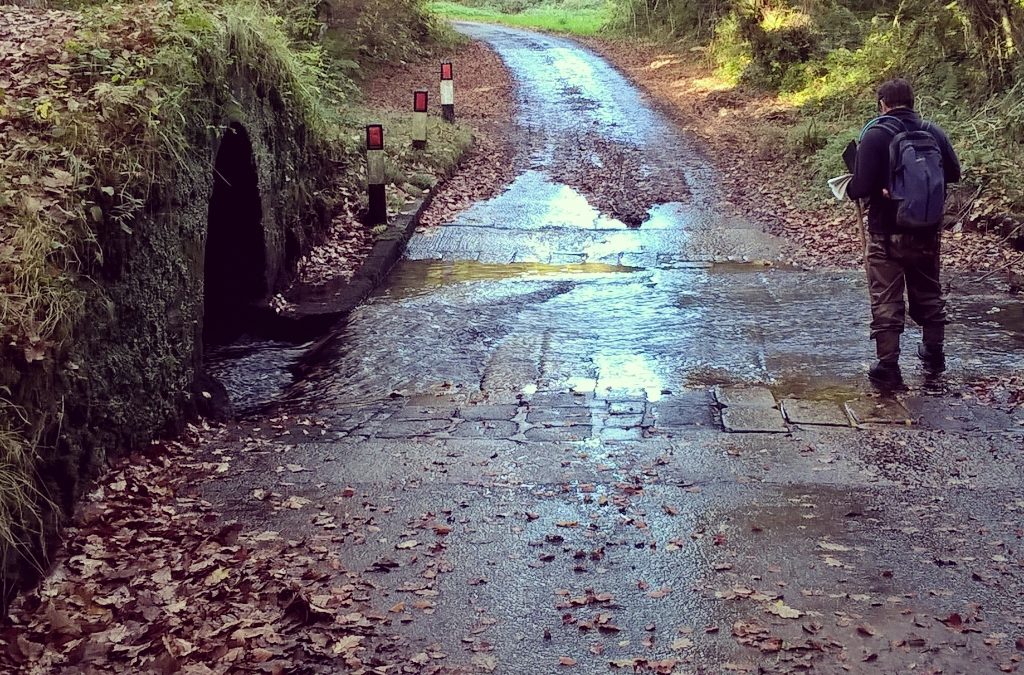
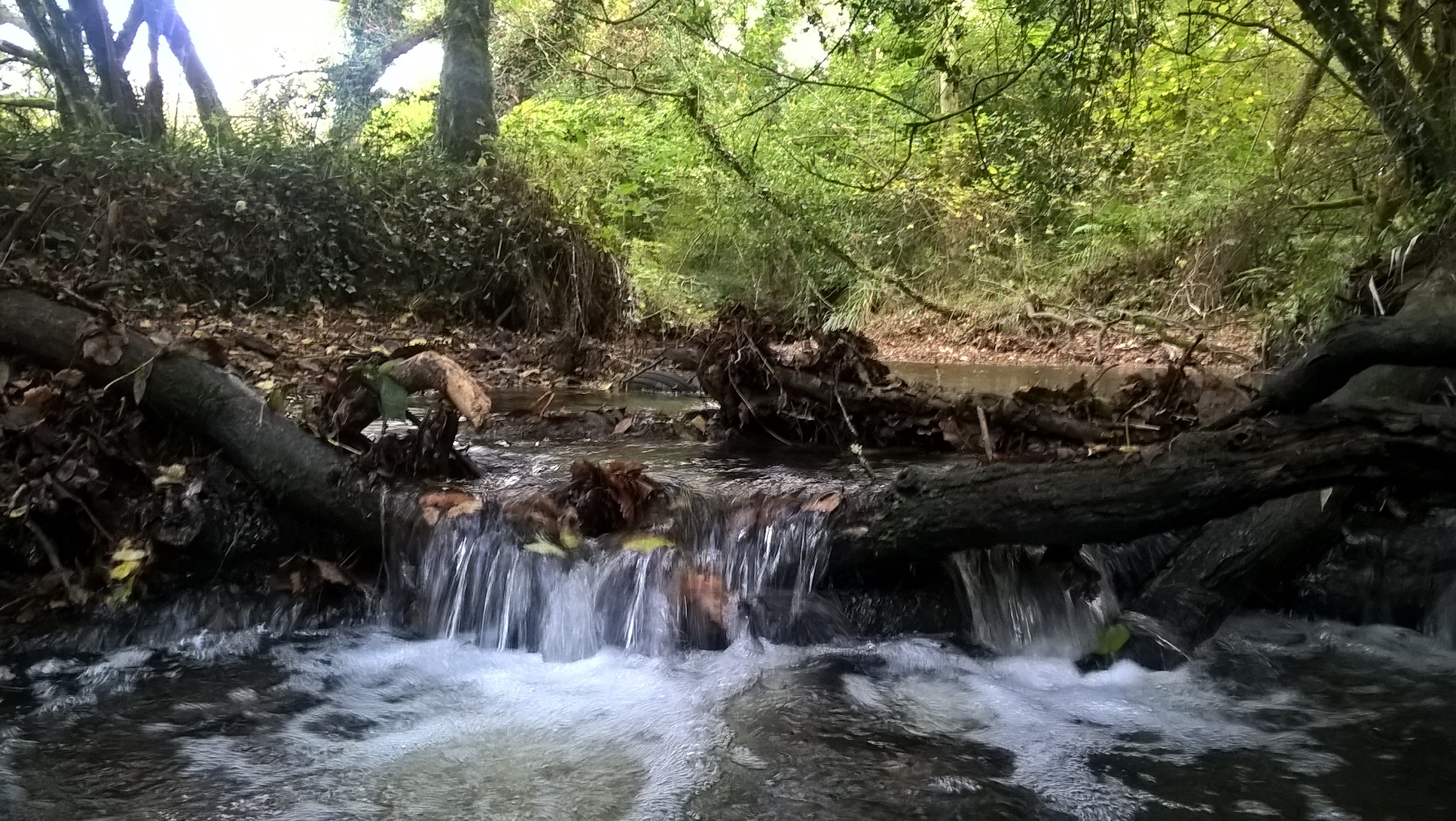
We just love the River Gannel area! We have been enjoying its beauty ever since we were children. We have walked the circular route up Penpol Creek to Crantock and back along the estuary so many times and I will never get bored of it. This is a walk for all to enjoy!